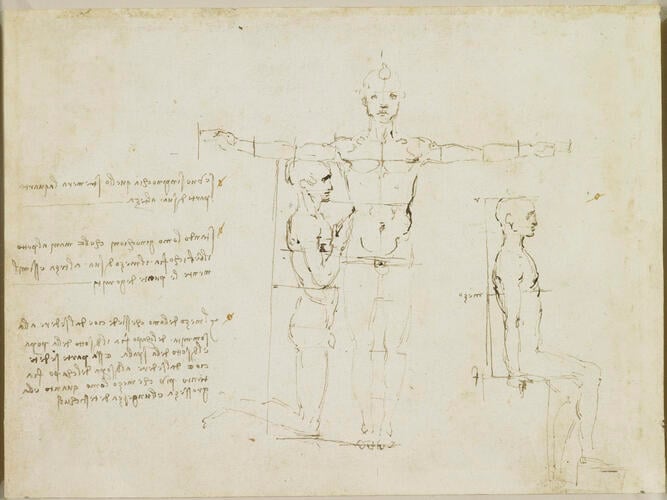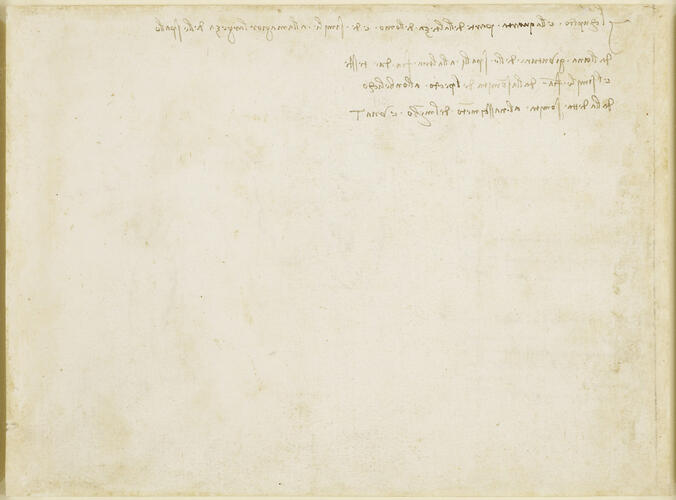-
1 of 253523 objects
Recto: The proportions of a standing, kneeling and sitting man. Verso: Notes on human proportion c.1490
Pen and ink | 15.9 x 20.8 cm (sheet of paper) | RCIN 919132
-
Recto: A nude man standing, facing the spectator, with arms outstretched. Another is kneeling beside him, to his right, so that his head just fits under the standing man's arm; to the left of the main figure is a third man, seated, measured for proportion; with notes on human proportion on the left side of the sheet. Verso: a four line note on proportion.
The drawing belongs to a series of sheets that form Leonardo’s earliest and most sustained study of human proportion. All the drawings in this series are executed schematically in pen and ink with no underdrawing and are neatly laid out on the page, suggesting that Leonardo was making a ‘fair copy’ of rough notes compiled elsewhere.
The system of proportions in the central drawing follows that set out in the treatise On Architecture by the Roman architect Vitruvius (first century BCE). The height of a man was the basic unit, equivalent to the span of the outstretched arms. A quarter of the height was the cubit, and Leonardo marked off the cubits horizontally at the knee, the pubis and between the armpits, and vertically at the elbows and the centre of the chest. These divisions are also shown and explained on Leonardo’s famous drawing of the Vitruvian man (Venice, Accademia), along with the statements that the head is an eighth of the height, the face and the length of the hand a tenth, the width of the palm a twenty-fourth, and the finger a ninety-sixth. Leonardo departed from Vitruvius only in stating that the foot is a seventh of the height, whereas Vitruvius held it to be a sixth.
The notes to the left of the sheet explain the two subsidiary diagrams:
If a man kneels he will diminish by a quarter part of his height.
When a man is kneeling with his hands on his chest, the umbilicus is the middle of his height, and similarly the points of his elbows.
The middle of a man who sits, that is, from the seat to the top of his head, is below the breast and below the shoulder. This sitting part, that is, from the seat to the top of the head, is as much more than half the man as is the size and length of the testicles.
Text adapted from M. Clayton and R. Philo, Leonardo da Vinci: Anatomist, 2012, no. 15.Provenance
Bequeathed to Francesco Melzi; from whose heirs purchased by Pompeo Leoni, c.1582-90; Thomas Howard, 14th Earl of Arundel, by 1630; probably acquired by Charles II; Royal Collection by 1690
-
Creator(s)
Acquirer(s)
-
Medium and techniques
Pen and ink
Measurements
15.9 x 20.8 cm (sheet of paper)
Category
Object type(s)
Other number(s)

